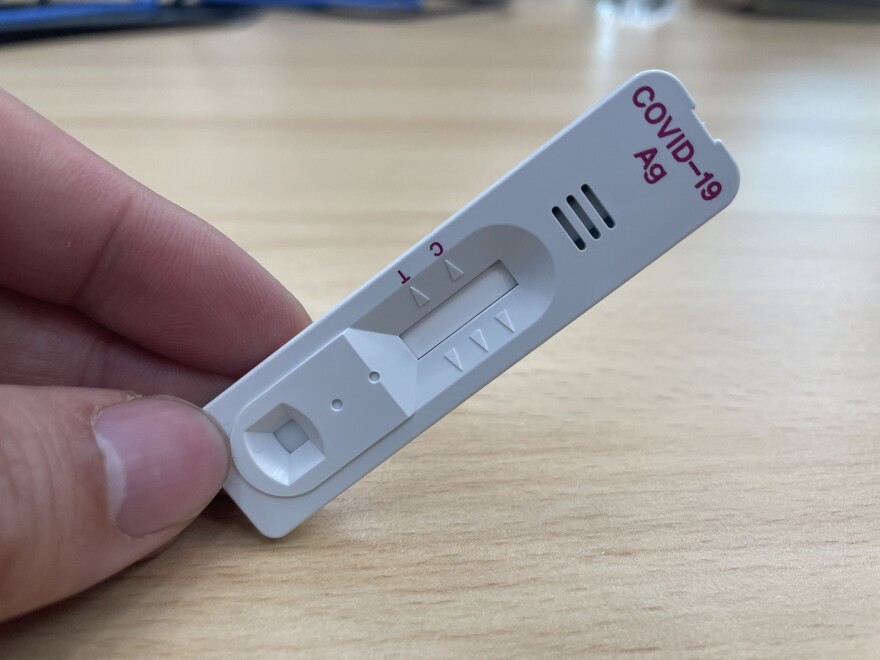At home Antigen tests statistical results
November 24, 2021
Antigen tests for SARS-CoV-2 are back and are pending more approvals by the current administration. If so, they may be used more often and more frequently to help people get back to a more normal lifestyle. The question here is what or where are the result for such tests.
In an article by Harmon et al (2021) that appeared in JAMA Open Network on August 27, 2021 to test the sensitivity and specificity of at-home antigen tests, specifically of direct antigen rapid tests (DART), their analysis used a generalized estimating equation with a independence correlation structure. The mention the use of the correlation structure due to having clusters of multiple tests per individual. They utilized 2-sided binomial Clopper-Pearson methods for calculating the confidence intervals of the sensitivity and specificity during days 0 to 7 of symptoms when there was at least 1 test per individual. We can assume the outcome is the disease status coded as a binary outcome. The working correlation matrix seems to work well for clustered data. They then stated that the sensitivity of DART within days 0 to 12 of symptom onset was 78.9% (60 of 76 swabs; 95% CI, 69.1%-88.8%), and the specificity of DART was 97.1% (2791 of 2875 swabs; 95% CI, 96.3%-97.8%). The authors felt twice a week testing for individuals improved the specificity during days 0 to 3 of symptomatic infection.
In an article by Prince-Guerra et al, they evaluated the BinaxNOW rapid antigen test against SARS-CoV-2 infection in asymptomatic patients. In their method, they mention that
cycle threshold (Ct) values from real-time RT-PCR were compared using a Mann-Whitney U Test and that 95% confidence intervals (CIs) were calculated using the exact binomial method. However, though not defining the Ct values for those perhaps unfamiliar with this term, they also do not properly describe their comparisons using a Mann-Whitney U test. Between what did they make their comparisons? They found that testing among symptomatic participants indicated the following for the BinaxNOW antigen test (with real-time RT-PCR as the standard): sensitivity, 64.2%; specificity, 100%; PPV, 100%; and NPV, 91.2% while among asymptomatic persons, sensitivity was 35.8%; specificity, 99.8%; PPV, 91.7%; and NPV, 96.9%. However, neither in their written results nor their tables did the use of the Mann-Whitney U test appear.
Both articles appear to represent that the rapid at-home antigen tests can be a quick and easy way for people to test if they are infectious within the early time frame. The tests still have higher sensitivity and specificity when tested in symptomatic vs asymptomatic individuals. The more frequent use of these tests can help improve the detection of infection and could potentially help suppress the spread of COVID-19 infection
Written by,
Usha Govindarajulu
Keywords:
COVID-19, at home antigen tests, sensitivity, specificity, GEE model, biostatistics, Usha Govindarajulu
References:
Harmon A , Chang C, Salcedo N, Sena B, Herrera, BB, Bosch I, and Holberger LE (August 21, 2021) “Validation of an At-Home Direct Antigen Rapid Test for COVID-19”. https://jamanetwork.com/journals/jamanetworkopen/fullarticle/2783550
Prince-Guerra JL, Almendares O, Nolen LD, et al. Evaluation of Abbott BinaxNOW Rapid Antigen Test for SARS-CoV-2 Infection at Two Community-Based Testing Sites — Pima County, Arizona, November 3–17, 2020. MMWR Morb Mortal Wkly Rep 2021;70:100–105. DOI: http://dx.doi.org/10.15585/mmwr.mm7003e3
https://npr.brightspotcdn.com/dims4/default/80dd680/2147483647/strip/true/crop/1412×1059+0+0/resize/880×660!/quality/90/?url=http:%2F%2Fnpr-brightspot.s3.amazonaws.com%2F4e%2F07%2Fc50ee6bc4912ab5a43c47ef1d4ca%2Fcoronavirus-covid19-rapid-test-antigen-test-20211104.jpg
